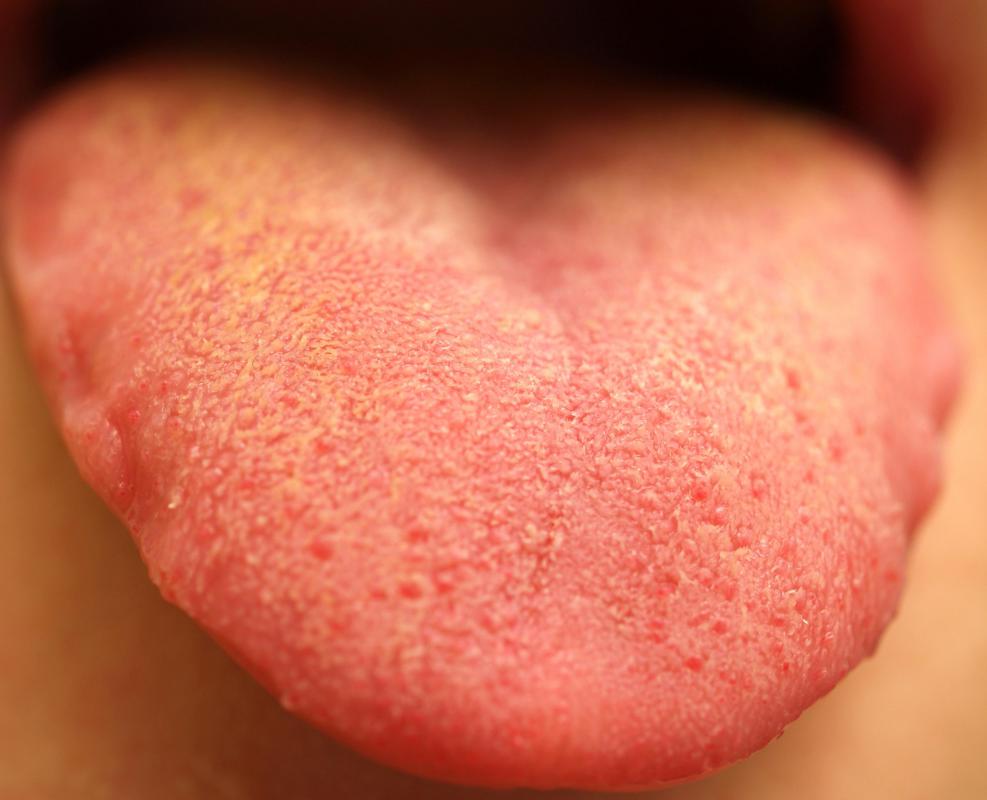At WiseGEEK, we're committed to delivering accurate, trustworthy information. Our expert-authored content is rigorously fact-checked and sourced from credible authorities. Discover how we uphold the highest standards in providing you with reliable knowledge.
What Is the Treatment for Sjogren's Syndrome?
Treatment for Sjogren’s syndrome involves the use over-the-counter (OTC) medications designed to lubricate the mouth and eyes. In situations where self-care, changing habits and OTC products prove insufficient, prescription medications may be used. There is no cure for Sjogren’s syndrome.
Proactive self-care measures are often suggested in combination with OTC products. Frequently rinsing one’s mouth with water, regular visits to the dentist and checking for signs of complication, such as ulcers, can help minimize the risk for complications. Quitting smoking and avoiding medications that may worsen one’s symptoms are also recommended. Simple lifestyle changes, like chewing gum, using lip balm and carrying a bottle of water at all times, are also suggested.

Individuals with mild to moderate symptoms of Sjogren’s syndrome usually use artificial tears and OTC products, like lubricating mouth rinse, to alleviate dry eyes and mouth associated with this condition. Depending on the severity of dryness, some individuals find OTC products to be insufficient. When eye drops and mouth rinses don’t seem to help, prescription medications may be used.

Those who experience prolonged, significant dry eyes may develop irritation and swelling necessitating the use of antibiotic and steroidal-based medications. These types of drugs are given to reduce the risk for infection and alleviate inflammation and swelling. Additional drugs designed to increase saliva and tear production may also be prescribed. Arthritic symptoms often necessitate the use of nonsteroidal anti-inflammatory drugs (NSAIDs) or disease-modifying antirheumatic drugs (DMARDs) to ease inflammation and promote joint flexibility. Immuno-suppressant medications may also be prescribed to slow disease progression and ease symptoms.

Sjogren’s syndrome is an autoimmune disease characterized by a lack of moisture in the eyes and mouth. Frequently, the syndrome may be diagnosed with a battery of laboratory and diagnostic tests, including a blood panel, salivary scintigraphy and urinalysis. In some cases, eye tests may be administered to evaluate vision and determine the degree of dryness.

As occurs with other autoimmune disorders, the immune system of someone with Sjogren’s syndrome attacks the glands responsible for moisture production. Initially, glands in the mouth and eyes are the first to demonstrate injury and impairment leading to dryness. With time, glands throughout the body come under attack leading to impaired joint, organ and nerve function.

Dry eyes and mouth are the most common initial sign of Sjogren’s syndrome. Aside from dryness, individuals often experience irritation and burning of the eyes. Excessive dryness in the mouth can make it difficult for one to swallow. Individuals may also experience lethargy and salivary gland swelling that causes discomfort in the mouth and throat.
As Sjogren's syndrome symptoms progress and other areas of the body are affected, some people may develop rashes and widespread joint discomfort and stiffness. Skin on various parts of the body may become dry and flaky. It is not uncommon for women to also experience pronounced vaginal dryness. If left untreated, symptoms of Sjogren’s syndrome can increase one’s risk for dental problems, infection and impaired nerve and organ function.
AS FEATURED ON:
AS FEATURED ON:















Discuss this Article
Post your comments